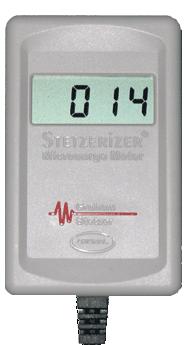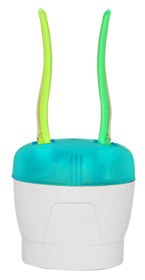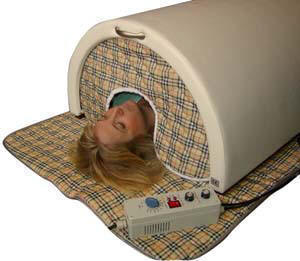Complete H2O Minerals
|
 |
 |
Order Now
Learn why ionic (also called angstrom) minerals are better than colloidal minerals. Read the very informative article by Dr. Chris Meletis N. D. on the difference between ionic and colloidal minerals. Complete H2O Minerals offers the highest quality ionic minerals available with higher parts per million (ppm) than the completion. Complete H20 Minerals products are tested by independent lads. Learn more ....
As an essential part of the biochemical reactions affecting bone, cartilage, brain function and energy supply. Manganese is indicated as a deficiency in a wide variety of ailments. "Manganese, has a definite impact on a person's mental activities, and if the mental faculties are to remain well balanced and under control rather than unruly and chaotic, manganese must be balanced and supplied in proper quantities," as stated by Dr. Bernard Jensen in his book The Chemistry of Man. Manganese is required for bone metabolism and in many enzyme reactions. Jeanne Freeland-Graves, R.D., Ph.D. states, "This is one mineral that you will definitely be hearing more about in the future".
Click on image for larger image
Recommended For
Asthma
Carpal Tunnel Syndrome
Convulsions
Defects of Chondroitin Sulfate
Infertility
Loss of Libido (In Males/Female)
Repetitive Motion Syndrome
Retarded Growth Rate
Shortened Long Bone
Chondromalacia
TMJ
Improved Sex Drive
Slipped Tendon
Miscarriages
Metabolism (Poor Cartilage Formation)
Recommended Dosage:
Exact dosage not available. As
recommended by a heath care professional.
How to Use:
Take the recommended dosage of water soluble minerals with a full glass of
water, juice or other liquid.
Storage:
For best results refrigerate after opening and use within six months.
However you can keep in a cool and dry location and away from direct light,
but do not freeze. Keep safely away from children. Do not keep in bathroom
medicine cabinet. Heat and dampness may alter the action of the mineral.
Return To Complete H2O Minerals Products Page
The statements enclosed herein have not been evaluated by the Food and Drug Administration. All information provided is for educational purposes only. The products mentioned on this site are not intended to diagnose, treat, cure, or prevent any disease. Information and statements made are for education purposes and are not intended to replace the advice of your family doctor.
[top]
Manganese by DCNutrition.com
Manganese is essential to all known living organisms; it activates numerous enzyme systems including those involved with glucose metabolism, energy production and superoxide dismutase; it is a major constituent of several metalloenzymes, hormones, and proteins of humans. Manganese is part of the developmental process and the structure of the fragile ear bones and joint cartilage. Excessive levels of Mn found in certain community water supplies and in some industrial processes can produce a Parkinsonian syndrome or a psychiatric disorder (locura manganica) resembling schizophrenia.
Deficiency diseases of Mn are very striking ranging from severe birth defects (Congenital ataxia, deafness, Chondrodystrophy), asthma, convulsions, retarded growth, skeletal defects, disruption of fat and carbohydrate metabolism to joint problems in children and adults (TMJ, Repetitive Motion Syndrome, Carpal Tunnel Syndrome.
Repetitive Stress Injury or Repetitive Motion Syndrome now costs corporate America $20 billion dollars per year and accounts for 56% of the 331,600 gradual onset work related illnesses. In 1991 orthopedic surgeons performed 100,000 Carpal Tunnel operations (at $4,000 per surgery) with a lost work, wages and medical cost of over $29,000 per case.
Deficiency Diseases of Manganese
- Congenital ataxia
- Deafness (malformation of otolithes)
- Asthma
- Chondromalacia
- Chondrodystrophy
- "Slipped Tendon"
- Defects of chondroitin sulfate metabolism (poor cartilage formation)
- TMJ
- Repetitive Motion Syndrome
- Carpal Tunnel Syndrome
- Convulsions
- Infertility (failure to ovulate; testicular atrophy)
- Still births or spontaneous abortions (miscarriages)
- Loss of libido in males and females
- Retarded growth rate
- Shortened long bones
At risk for The Repetitive Motion Syndromes are those working in the fields of computers (journalism, airline reservations, directory assistance, law, data entry, and graphic design and securities brokerage. Chief among the blue-collar victims are the auto assembly workers, chicken pluckers, meat cutters, postal employees, dock workers, etc. Repetitive Motion Syndrome was observed three centuries ago in monks who were scribes and was described in 1717 by Bernardo Ramazzini, an Italian physician (considered the father of occupational medicine).
Repetitive Motion Syndrome victims have reached such numbers that federal legislation has been passed in the form of OSHA and Americans with Disabilities Act (ADA) to ensure work place safety. Large numbers of ergonomically correct keyboards and devices have been developed, we see literally millions of people at work with Velcro wrist, neck, elbow, finger, knee, back and hip supports - all for manganese deficiencies!!! The allopathic medical profession would still prefer to spend your money than to admit that the human flesh needs Manganese.
----------------------------------------------------------------------------
Manganese is an essential trace mineral nutrient. Manganese is needed for normal brain and muscle function, building bones, blood clotting, cholesterol synthesis, fat synthesis, and DNA and RNA synthesis. Manganese activates the enzyme responsible for the formation of urea, the waste product of protein degradation. In carbohydrate metabolism manganese is required for the synthesis of glucose from non-carbohydrate substances (gluconeogenesis). Manganese assists the action of superoxide dismutase, which degrades superoxide, a free radical and a highly damaging form of oxygen. In addition, manganese is required to synthesize components of mucopolysaccharides (glycosaminoglycans), components of connective tissue. A manganese-dependent enzyme of the brain synthesizes the amino acid, glutamine, as a way of removing ammonia, a toxic product of nitrogen metabolism. Conditions possibly associated with manganese deficiency include osteoporosis, rheumatoid arthritis, lupus erythrematosis, allergies, alcoholism and diabetes.
Requirements
The body contains low levels of manganese, and only minute amounts are required each day to maintain this level. The manganese concentration in tissues is stable primarily due to carefully controlled excretion.
There is no Recommended Dietary Allowance for manganese. Instead the Food and Nutrition Board has estimated a safe and adequate daily intake as 2.0 to 5.0 mg for adults. Symptoms of manganese deficiency in experimental animals include pancreatic pathology and diabetes-like symptoms, impaired growth, reproductive abnormalities, skeletal abnormalities, convulsions and ataxia (abnormal muscle movements). Certain groups might be deficient in manganese: women, especially those on weight loss diets; anyone on a calorie-restricted diet; aged people; and vegetarians.
Safety
While manganese is relatively non-toxic, too much manganese can interfere with the absorption of other minerals like iron. High manganese intake can cause nerve damage, immune system malfunction, and damage to pancreas, liver and kidney. Excessive calcium supplements can interfere with manganese and iron uptake because they all use the same entry mechanism into intestinal cells. (See also allergy, immediate fat metabolism.)
Freeland-Graves, Jeanne, "Manganese: an Essential Nutrient for Humans,"' Nutrition Today, (November-December 1988), pp. 13-19
----------------------------------------------------------------------------Manganese - Biochemical Function
Manganese is both an activator, and a constituent of several enzymes. Those activated by manganese are numerous and include hydrolases, kinases, decarboxylases and transferases, but most of these enzymes can also be activated by other metals, especially magnesium. This does not apply, however, to the activation of glycosyltransferases or possibly to that of xylosyltransferase. Manganese metalloenzymes include arginase, pyruvate carboxylase, glutamine synthetase, and manganese superoxide dismutase.
PHYSIOLOGICAL FUNCTIONS
A. Enzyme Activity
Like other essential trace elements, Mn can function both as an enzyme activator and as a constituent of metalloenzymes. Manganese-containing enzymes include arginase, pyruvate carboxylase, and Mn-superoxide dismutase. While the number of Mn metalloenzymes is limited, the enzymes that can be activated by Mn are numerous. They include hydrolases, kinases, decarboxylases, and transferases (Groppel and Anke, 1971). Whether an activator or a component of the enzyme proper, Mn is often the priority cation, but another cation, especially magnesium (Mg), can partially substitute for Mn with little or no loss in enzymatic activity. Thus, biotin-dependent enzymes such as pyruvate carboxylase continue to fix CO, during Mn deficiency because Mg substitutes for Mn in the enzyme.
B. Bone Growth
In most species studied, Mn-deficient bones are considerably shortened and thickened. Manganese is essential for development of the organic matrix of the bone, which is composed, largely of mucopolysaccharide. Impairment in mucopolysaccharide synthesis associated with Mn deficiency has been related to the activation of glycosyltransferases (Leach, 1971). These enzymes are important to polysaccharide and glycoprotein synthesis, and Mn is usually the most effective of the metal ions required.
While it would be tempting to suggest a relationship between manganese and the pathogenesis of osteoporosis based on various studies, more investigation and exposition are required in view of the prevalence of the disease worldwide. Overt human manganese deficiency has rarely been seen in man, but subliminal deficiency symptoms may go unnoticed for years because most nutrient deficiencies are not instantaneous, especially when looking at bone health. Bone mass in adults changes slowly, and we can expect a substantial lag between diet and its expression in skeletal mass.
C. Reproduction
Effects on reproduction were among the first signs of Mn deficiency to be observed. The deficiency can cause an irreversible congenital defect in young chicks, rats, and guinea pigs characterized by ataxia and loss of equilibrium. Shils and McCollum (1943) found several stages of Mn deficiency in female rodents: (1) birth of viable young with ataxia; (2) nonviable young that die shortly after birth; and (3) disturbance of estrus, with no reproduction. Impaired or irregular estrus has also been observed in cattle and swine. Hidiroglou (1975), on the basis of Mn tissue -distribution studies of the reproductive tract of normal and anestrus ewes, has suggested that Mn has a role in corpus luteum functioning. In laying hens, Mn deficiency has resulted in a decreased rate of egg production, poor shell quality, reduced hatchability, and an embryonic deficiency called chondrodystrophy. Testicular degeneration has been reported in Mn-deficient rats, mice, and rabbits (Leach, 1978).
The essentiality of manganese has been demonstrated in numerous species. The changes of manganese deficiency vary according to the degree and duration of deficiency at different stages of the life cycle. The main manifestations of manganese deficiency include a high neonatal death rate, impaired growth, abnormal skeletal development, congenital ataxia, disturbed or depressed reproductive function, and defects in lipid and in carbohydrate metabolism. Many of these gross manifestations of manganese deficiency are now believed to be due to a defect in the synthesis of mucopolysaccharides. Although available information on manganese deficiency in man is limited, these findings suggest that manganese may play a role as one potential factor in the development of intrauterine malformations. Further research is needed to support and clarify this suggestion.
D. Lipid Metabolism
A metabolic association between Mn and choline has been known for some time. Fatty liver in rats induced by Mn deficiency is alleviated by either Mn or choline. Also, Mn deficiency increases fat deposition and backfat thickness in pigs. Both Mn and choline are needed for prevention of perosis in poultry. Manganese is involved in the biosynthesis of choline. Furthermore, the changes in liver ultrastructure that arise in choline deficiency are very similar to those in Mn deficiency (Bruni and Hegsted, 1970). Deficiencies of Mn and choline both appear to affect membrane integrity. Manganese also has a role in cholesterol biogenesis (Davis et al., 1990).
We may postulate a number of ways in which manganese may play a role in lipid and lipoprotein metabolism, which may be ultimately related to the development of atherosclerosis.
Manganese may affect cell membrane fluidity and/or permeability by its function as a cofactor for enzymes involved in cholesterol and fatty acid biosynthesis. Changes in cholesterol and fatty acid composition of cell membranes would in turn alter lipid:lipid and lipid:protein ratios, which would ultimately affect membrane fluidity/permeability. Furthermore, manganese, by being a cofactor of MnSOD, protects membranes from free radical formation and preserves the integrity of its lipid components. Glycoproteins are integral components of the arterial extracellular matrix and play an important role in maintaining structural integrity and normal function of the arterial wall including regulating permeability and retention of plasma components, controlling vascular cell growth, and interacting with lipoproteins. Manganese, as a specific activator of glycosyltransferases, may also affect glycosylation of glycoproteins on cell membranes including receptors. This would alter receptor composition and structural properties and affect lipoprotein binding and their ultimate metabolic fate.
Manganese may also affect lipoprotein composition and metabolism by its role in stabilizing lipoprotein structure due to its high affinity in complexing with the polar heads of lipoprotein phospholipids and amino acid residues. Furthermore, manganese may modify intramolecular interaction of the lipoprotein particle with its receptor by bridging the anionic groups of cell membrane glycosaminoglycans with certain amino acid residues and phospholipids on the surface of the lipoprotein. Finally, manganese may play a crucial role in the glycosylation of plasma apolipoproteins in the liver Golgi apparatus by specifically activating glycosyl transferases. Glycosylation as a prerequisite for normal lipoprotein secretion has been speculated." Manganese deficiency may result in abnormal lipoprotein formation and impairment of lipoprotein secretion from the liver, thus resulting in fatty liver formation observed in many studies. Structural alteration of the lipoprotein particle may affect apolipoprotein conformation and thus its recognition and eventual catabolism by cell receptors.
This review clearly points to the need for more research with animal models to unravel the mechanism(s) of manganese on lipid and lipoprotein metabolism and with humans to determine the possible role of dietary manganese in the development of atherosclerosis.
E. Carbohydrate Metabolism
Glucose utilization is impaired by Mn deficiency. Necropsy has revealed gross abnormalities in the pancreas such as aplasia or marked hypoplasia of all cellular components, so Mn may in some way be involved in insulin formation or activity. Rats deficient in Mn had fewer insulin receptors per cell compared to controls (Baly et al., 1990). Biosynthesis of glycoproteins may be impaired in Mn-deficient animals. Prothrombin is a glycoprotein whose synthesis has long been known to be controlled by vitamin K. Manganese is also required, and a Mn deficiency reduces the vitamin K-induced clotting response (Doisey, 1974).
The intracellular concentration of manganese can be one regulator of carbohydrate metabolism, and therefore fluctuations in its concentration may provide a mechanism of cellular metabolic control. Considerable evidence is accumulating that manganese has a critical role in the regulation of both pancreatic exocrine and endocrine function. Manganese deficiency in experimental animals results in a diabetic-like glucose intolerance. This may result in part from alterations in processes comprising glucose homeostasis including pancreatic insulin synthesis, secretion and degradation, as well as peripheral insulin action on target tissues. Interestingly, diabetes itself may result in marked changes in manganese metabolism. The functional significance of these changes is the subject of debate. An excess of manganese can also affect insulin and carbohydrate metabolism. These metabolic alterations may contribute to the pathological consequences of manganese toxicity. While to date there is only a single case report of a diabetic subject responding in a positive manner to manganese supplements, the elucidation of manganese's role in signal transduction pathways and transcription processes will without question contribute to our understanding of the pathogenesis and potential treatment of diabetes and other disease states involving alterations in manganese metabolism.
F. Cell Function and Structure
Abnormalities in cell function and ultrastructure, particularly involving the mitochondria, occur in Mn deficiency (Hurley and Keen, 1987). Manganese deficiency caused alterations in cell membrane integrity in the liver, pancreas, kidney, and heart in aged mice (Bell and Hurley, 1973).
G. Immune Function
Manganese plays a role in immunological function (Hurley and Keen, 1987). Interaction of Mn with neutrophils and macrophages has been demonstrated, possibly through interactions with the plasma membrane of cells employed in the immune response (Rabinovitch and Destefano, 1973).
H. Brain Function - Epilepsy
Manganese deficiency or toxicity can affect brain function (Hurley, 1984). Manganese-deficient rats, whether they are ataxic or not, are more susceptible to convulsions (Hurley et al., 1963). Papavasiliou et al. (1979) reported that humans with convulsive disorders, including epileptics, showed whole blood Mn concentrations significantly below normal.
That a relationship exists between epilepsy and blood manganese concentration has been repeatedly shown. While this relationship seems to be independent of the anticonvulsant therapy used in epilepsy, the seizures associated with the epilepsy apparently cause an increase in the manganese concentrations in the liver. However, the evidence that seizure frequency is responsible for the decreased blood concentrations of epileptics is not as strong. Increased susceptibility to seizures of animals exposed to manganese deficiency in utero combined with the lack of increased susceptibility to seizures when the exposure to manganese deficiency begins postnatally indicates that congenital effects of manganese deficiency are responsible for the increased seizure susceptibility. The lower levels of manganese in the blood and brain of the genetically epilepsy prone rat support a genetic relationship between abnormal manganese metabolism and epilepsy. Glutamine synthetase, the most obvious link between seizures and manganese, has been compared between epileptic and normal animals, but at this writing no differences have been found.
Other manganese dependent enzymes have been identified in the brain, and some of these have also been associated with seizures. While it is still possible that the lower blood manganese concentrations found in epileptics are an epiphenomenon of seizure activity, the evidence for a genetic relationship between the occurrence of seizures and abnormal manganese metabolism is growing. These two hypotheses proposed to explain the abnormalities in manganese metabolism found in epileptics are not mutually exclusive, and it is possible that both are true. The validity of the seizure frequency hypothesis by no means excludes a genetic relationship between epilepsy and abnormal manganese metabolism. At the same time, the existence of a genetic relationship between manganese and epilepsy does not exclude an effect of seizure frequency on blood and tissue manganese concentrations. Since we are as yet unable to assign cause and effect in this relationship with any assurance, much work remains to be done to identify the biochemical basis for the relationship.
I. Wound Healing
Wound healing in manganese-deficient rats was compared with wound healing in control rats fed a complete diet. An acrylic cylinder wound-healing model was used. Second generation deficient male and female animals were used for the wound healing studies. Deficient animals had lower growth rates, lower bone weights, and typical bone changes. The dry weights of wound healing tissues were significantly lower in the manganese-deficient animals. The total glycosaminoglycan levels of the manganese -deficient and control animals were not different as indicated by uronic acid content. The chondroitin-4-sulfate level was decreased significantly in the wound healing tissue of manganese-deficient rats, but the levels of hyaluronic acid and dermatan sulfate were not significantly different in the deficient and control groups. The incorporation of 1-14C-glucosamine into chondroitin-4-sulfate of the wound healing tissue was significantly decreased in the manganese-deficient animals. From these observations, it may be concluded that manganese is required for the synthesis of chondroitin-4 -sulfate and that manganese is required for normal wound healing.
Deficiency and Toxicity
Manganese deficiency has been produced in many species of animals, but not, so far, in humans. Signs of manganese deficiency include impaired growth, skeletal abnormalities, disturbed or depressed reproductive function, ataxia of the newborn, and defects in lipid and carbohydrate metabolism.
Unequivocal evidence of manganese deficiency in humans has not so far been reported, but a possible case of such deficiency was described by Doisy. A man fed a semipurified formula diet found to be low in manganese (0.35 mg/day) lost weight and suffered depressed growth of hair and nails, dermatitis and hypocholesterolemia, but responded to being fed a mixed hospital diet; supplementation with manganese alone was not tried.
Another possible case of manganese deficiency in humans was reported by Friedman et al. Men fed a diet containing only 0. 11 mg of manganese/day for 39 days exhibited decreased serum cholesterol and a fleeting dermatitis (miliaria crystallina). Calcium, phosphorus and alkaline phosphatase activity in blood increased. However, because short-term manganese supplementation (10 days) did not reverse these changes, the suggestion that the syndrome was attributable to manganese deprivation was not substantiated.
Other possible signs of manganese deprivation have been reported. A diabetic patient who was not responsive to insulin injections responded to oral manganese with decreased blood glucose concentrations. In addition, wholeblood manganese concentrations have been reported to be low in patients with certain types of epilepsy.
Manganese is often considered to be among the least toxic of the trace elements when administered orally. Thus, reported cases of human toxicity caused by oral ingestion of large amounts of manganese are few. The most common form of manganese toxicity is the result of chronic inhalation of large amounts of airborne manganese in mines, steel mills and some chemical industries. The major signs of manganese toxicity in animals are depressed growth, depressed appetite, impaired iron metabolism and altered brain function. Signs of toxicity in Chilean manganese miners were first manifested in the form of severe psychiatric abnormalities, including hyperirritability, violent acts and hallucinations; these changes were called manganic madness. As the disease progressed, there was a permanent crippling neurological disorder of the extrapyramidal system with morphological lesions similar to those of Parkinson disease.
Epidemiology of Deficiency and Toxicity
The natural incidence of effects attributable to abnormal manganese nutrition is apparently exceedingly low. It has been suggested that the high incidence of cartilage disorders in children in some geographical areas may be the result of low intakes of manganese.
POPULATIONS WITH SUBOPTIMAL STATUS
Another type of model to study manganese deficiency is the use of human populations reported to have suboptimal status of the mineral. This method may be practical, as gross deficiencies of manganese have not been observed among free-living humans. A number of disease states have been associated with poor manganese nutriture. These include (patients with) epilepsy,' exocrine pancreatic insufficiency, rheumatoid arthritis, hydralazine syndrome,"' Mseleni joint disease, multiple sclerosis, senile cataracts, osteoporosis, and those on chronic hemodialysis.
For example, two small studies in humans have been conducted that suggest a link between manganese and osteoporosis. Strause and Saltman reported that serum values of manganese in osteoporotic patients were 25% of those of normal subjects. However, no information was given as to the number of subjects or methods used, and values reported for serum manganese in the control subjects (0.04 mg/L or 40 mcg/L) are much higher than those reported by others (1 mcg/L).
Yet evidence that a relationship exists is seen in a pilot study by the author. Twenty-three osteoporotic and healthy postmenopausal women matched for age were tested for the presence or absence of osteoporosis by dual photon absorptiometry. Bone mineral density and number of nontraumatic fractures in the osteoporotic and control groups were 0.88 versus 1.29 g/Cm-sq. and 15 versus 0, p > 0.0001, respectively. Plasma levels of manganese averaged 29% less in the osteoporotic women, compared to the healthy controls. In addition, the response of the plasma to an oral load of manganese was significantly greater in the osteoporotic versus the control group, as indicated by areas under the curve. These data suggest that the osteoporotic women in this study had an impairment of manganese absorption and/or status.
Another population that may have poor manganese nutriture is epileptic patients. Tanaka observed that 1/3 of children in a convulsive disorders clinic had lower blood manganese than neurologically normal children. Treatment of one child having a blood manganese level of 0.65 mcg/L with 20 mg Mn per day increased the level to 1.2 mcg/L and paralleled a reduction in the number of seizures. In 52 humans treated for epilepsy, Papavasiliou et al. observed a relationship between low whole blood and hair levels of manganese and high seizure activity. Patients with the lowest levels of whole blood manganese had the greatest frequency of seizures. In 44 epileptic patients treated for uncontrolled seizures, Carl et al. found that mean whole blood levels of manganese were lower than that of a normal population (0.84 versus 1. 19 mcg/L. But the most significant finding was that the subjects who had epilepsy for unknown reasons had significantly lower values of whole blood manganese (0.66 versus 0.94 mcg/L) than those who had a history of trauma, which might have caused the epilepsy.
In children, models of a manganese deficiency might be found in those with inborn errors of metabolism associated with poor manganese nutriture. These
include phenylketonuria (PKU), maple syrup urine disease, galactosemia, and methylmalonic acidemia. Also, children with Perthes' disease, a disorder in which there is abnormal growth with disproportionately small lower arms and feet, have been found to have lower levels of blood manganese.
As new parameters to assess manganese nutriture are developed, the above populations might be utilized to test the responsiveness of test parameters to alterations in manganese status.
Reference: http://www.dcnutrition.com/minerals/Detail.CFM?RecordNumber=80The statements enclosed herein have not been evaluated by the Food and Drug Administration. All information provided is for educational purposes only. The products mentioned on this site are not intended to diagnose, treat, cure, or prevent any disease. Information and statements made are for education purposes and are not intended to replace the advice of your family doctor.
[top]
Silica works in synergy with boron, calcium, magnesium, potassium, and ascorbic acid. Cellfood Silica contains all of these elements which support bones, arteries, connective tissue, healthy hair, skin, and nails. Bone can not re-mineralize and repair itself if enough Silica is not present.
Reported Benefits of Silica
Reduction of pain & inflammation in the joints
Improved skin elasticity
Improved skin moisturization
Stimulation of cell formation and metabolism
Retards the aging process
Protects function and structure of connective tissue
Anti-inflammatory and disinfectant
Immune system enhancement
Increased elasticity of blood vessels
Re-mineralization of skeletal system (bones)
To learn more about Cellfood Silica click here...
Learn More About The Benefits of Drinking Alkaline Water
Click on the links below to see what Sang Wang authur of Reverse Aging has to say about how alkaline water can benefit the following conditions>
Microwater & High Blood Pressure
Microwater & Other Degenerative Diseases
Why Dr. Hayashi MD says you should drink Microwater!

Click on the links below to see what Dr. Broody, author of Alkalize or Die says about how acid wastes attacks the following organs and how it helps to be alkaline:
Restructured Alkaline Water - The Best Water To Drink by Dr. David Dyer
[top]
|
|
|||||
|
Secure Shopping Cart |
|||||
|
|
|||||
|
When You Feel Too Lazy To Exercise
|
|||||
|
Blast Allergies Away |
|||||
|
Is Fluoride in your water? |
|||||
|
The Original |
|||||
|
Stem Cell Nutrition | |||||
|
100% Kosher |
|||||
|
WaveShield |
|||||
|
Are You
Acidic?
Check It
With
pHion pH
Strps |
|||||
|
When you
can't afford an
alkaline water ionizer,
but you need to get alkaline... |
|||||
|
Magnetizer
Best Price |
|||||
|
Healthy Cows
Eat Nothing But Grass |
|||||
|
Other pHion Products: |



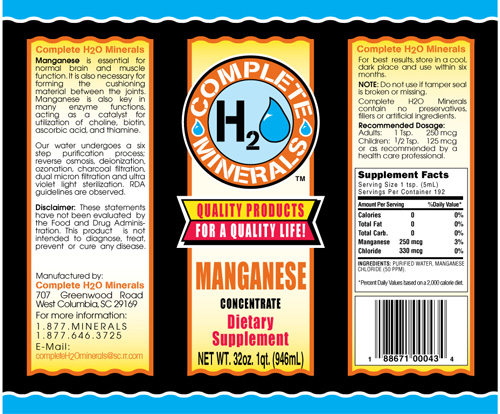


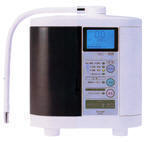


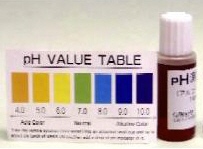


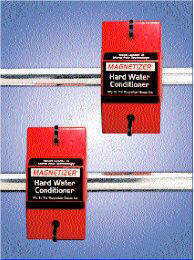
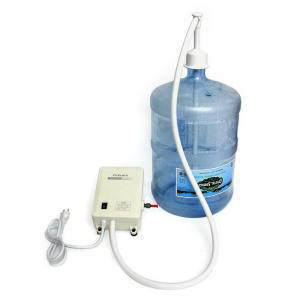


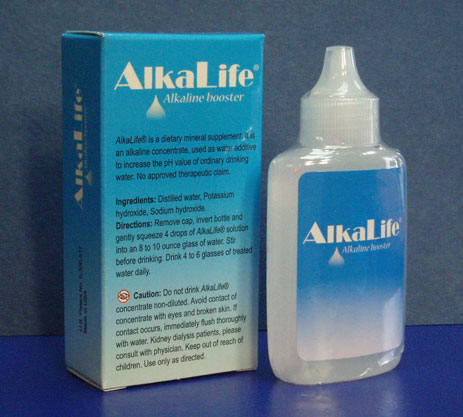


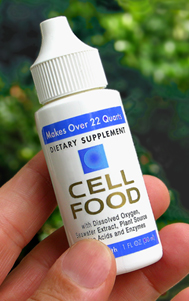




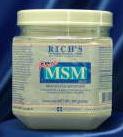






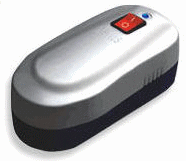 Reduce Electric Bill & EMF Pollution
Reduce Electric Bill & EMF Pollution